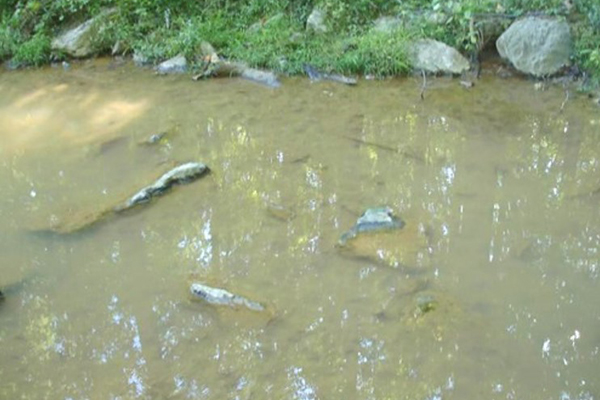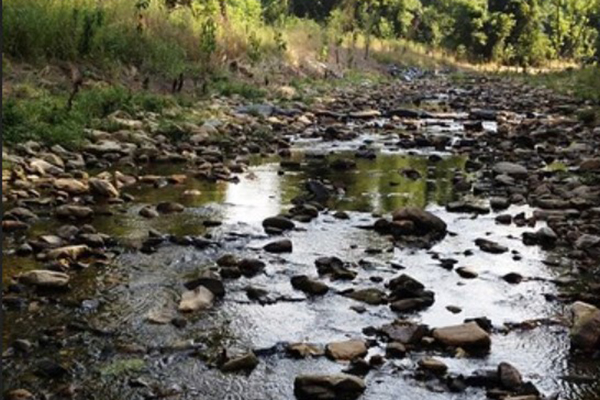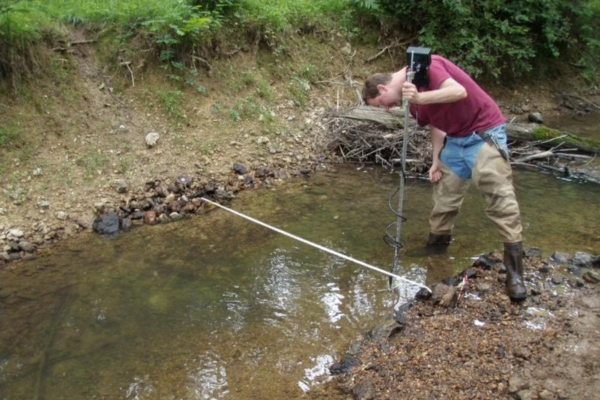Physical Habitat
Stream habitat plays a vital role in the health of aquatic communities in Montgomery County but it can be complex. The quality of the natural environment, home to our county’s diverse wildlife population, directly impacts the broader ecosystem. Since 1994, we have been collecting habitat data in and along our streams. Poor habitat conditions, caused by factors such as uncontrolled stormwater runoff, agricultural runoff, altered stream flows, excessive sediment, and loss of vegetation, can lead to a lack of species diversity, diminished aquatic organism populations and reduced health of the ecosystem. Chemicals and pollutants pose an additional threat to stream habitat.
 Bad habitat
Bad habitat  Good habitat
Good habitat The condition of stream habitat on the aquatic community is significant. Excessive sediment can destroy organism’s habitats. Lack of cover impacts fish hiding spots, and the absence of clean gravel, running water, and small pools hampers egg-laying and nursery areas for aquatic organisms like fish and stream bugs. Insufficient riffles, pools, and runs disrupt different life stages of aquatic organisms. Murky water impairs fish feeding, and sediment accumulation on the gills affects their ability to breathe. The condition of stream banks and adjacent areas, such as erosion and a lack of shade trees, also adversely impact the aquatic community.
How do we monitor stream habitat?

To monitor stream habitat, the DEP assesses ten habitat features in the field using trained biologists. Each feature is scored by a team of biologists based on observations and are ranked into categories (optimal, sub-optimal, marginal, or poor) using well-defined criteria. This assessment helps us understand and improve the physical habitat conditions of streams, ensuring the overall health of aquatic ecosystems.